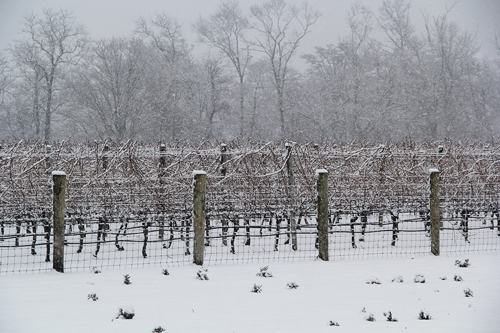Farmers will enjoy many of the same farm bill subsidies

North Fork farmers who have waited nearly two years for the passage of an updated farm bill say that if the president signs the measure passed this week by Congress, they stand to benefit from many of the same subsidy programs they have in the past — as well as new initiatives aimed at expanding crop insurance and farm-to-consumer marketing.
While about 80 percent of the revised food policy’s $100 billion annual cost is set to support the nation’s Supplemental Nutrition Assistance Program, or food stamps, the other 20 percent is intended to help growers in the form of subsidies for crop insurance, research and conservation, and marketing programs.
Related: U.S. farm bill cutting NY’ers SNAP benefits
Local farmers have long benefitted from federal programs that offer financial assistance with planning and implementing conservation practices.
Ed Harbes of Harbes Family Farm in Mattituck said his farm took advantage of a cost-sharing opportunity through the U.S. Department of Agriculture’s Environmental Quality Incentives Program, one of several federally funded conservation initiatives. The program helped him upgrade from antiquated diesel motors used for irrigation to more environmentally sensitive equipment.
“I would say every little bit helps, especially in the marginal years,” said Mr. Harbes. “In some marginal years you don’t have any extra money to invest in new equipment and technologies. That availability of some extra help in cost-sharing could mean the difference from one year to another, and years can add up over time”
Research groups like Cornell Cooperative Extension of Suffolk County, which helps farmers institute best practice procedures, will also get funding through the bill to help area farmers stay current in a changing agricultural world, said Joe Gergela, executive director of the Long Island Farm Bureau, which supported of the legislation.
Other initiatives within the legislation include subsidies for crop insurance — expanding coverage opportunities for local fruit and vegetable growers who might take advantage of the program. While insurable crops like cotton and rice are not grown on Long Island, insurance coverage is available for apples and grapes through the legislation, according to area growers. But it’s not necessarily something all local farmers can currently afford, Mr. Gergela said.
“I am here for the long haul,” said Ron Goerler of Jamesport Vineyards, adding that insurance for his cash crop, grapes, helps bring him peace of mind. “I have to ensure that what I do as farmer out here, that I can sustain that.”
Any additional subsidies will help him ensure his farm remains sustainable during difficult storm seasons, he said
Funding has also been set aside for marketing programs similar the local farm-to-table initiative, which are becoming more important to Long Island farmers promoting North Fork tourism.








